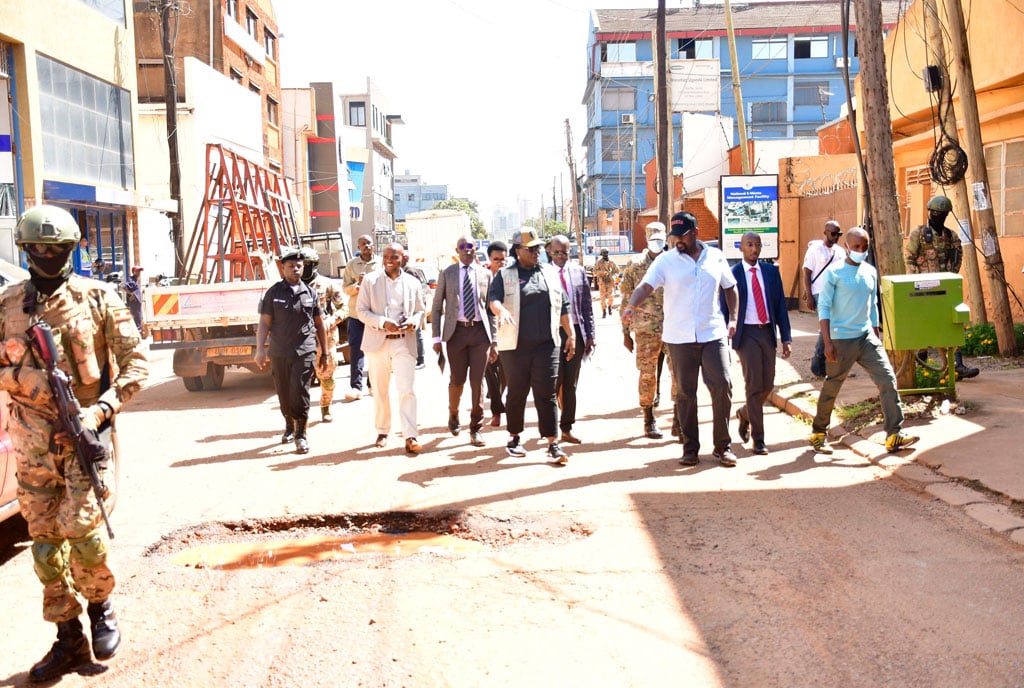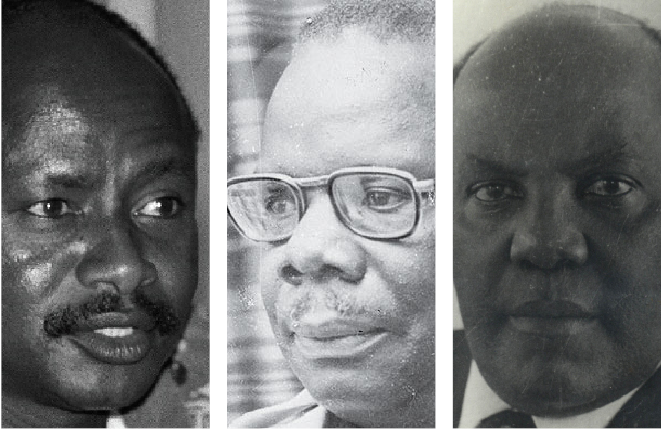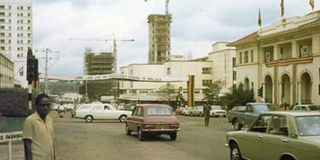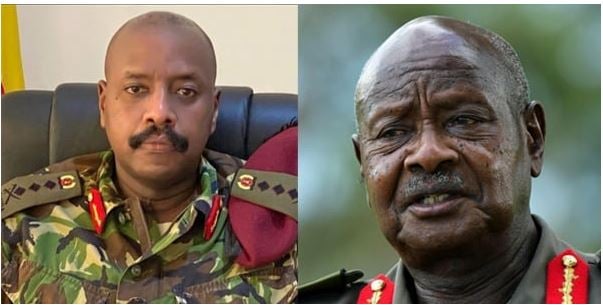Prime
Why Uganda seems to be falling apart

First Son Muhoozi Kainerugaba (R) accompanied by KCCA executive director Dorothy Kisaka and her technical team inspect potholes in Kampala on May 10, 2023. PHOTOS/ STEPHEN OTAGE/FILE
What you need to know:
- To most NRM people, the Muhoozi Project is still on; to some more observant people, it’s no longer as straightforward as it seemed last year.
- In this vacuum, some sections of the “Mafia”, might have decided to rush and grab what they can.
If you have noticed, lately, newspaper front page stories that give the impression of Uganda as falling apart, you’re not alone. Many are starting to genuinely wonder what’s going on.
Not that said newspapers have not spent the last 25 years publishing the same headlines of near-state collapse.
What is different this time?
I would venture to say that the “Muhoozi Project” is partly responsible for some of this.

President Museveni meets members of the NRM Central Executive Committee in 2019. PHOTO/FILE
Ever since the President’s son Muhoozi staged his very public and semi-official 48th birthday celebrations last year, something has changed in Uganda.
Those 48th birthday parties and political rallies, history will look back and note, might have been the start of the end of the Yoweri Museveni era. Was it the start of the Muhoozi era, though? Here, the picture is mixed and confusing. By some indications, the birthday party was used by President Museveni to test public opinion and gauge his son’s political skill, public speaking ability, and ability to organise public events in his own right.
On the other hand, when Muhoozi’s erratic tweets went a step too far and raised concern among countries that Uganda has diplomatic relations with, Museveni stepped in, apologised on behalf of his son, and gently chastised the son without quite blasting him in public.
Encouraged, Muhoozi continued to act defiantly, sometimes bluntly saying nobody would stop him from expressing his views.
For his 49th birthday this year, Muhoozi decided to hold the celebrations in the Rwandan capital Kigali.
However, this year’s events were much more low-key and as Sunday Monitor noted in April, appear to have been intended that way by Muhoozi’s host, President Paul Kagame.

Rwandan President Paul Kagame (centre, seated) hosts Gen Muhoozi Kainerugaba and his delegation for an evening to celebrate the First Son’s 49th birthday in April 2023. PHOTO/ COURTESY
After Kigali, Muhoozi returned to Uganda a somewhat different man, even deflated in spirit. He resumed his tweeting on the social media platform Twitter, but something was gone.
Then June 8, when President Museveni announced that he had tested positive for Covid-19, was also the last day that Muhoozi tweeted, in a tweet that wished his father a quick recovery.
In the days and weeks that followed, Muhoozi did not tweet any of his personal thoughts; rather, he would retweet posts in which he was praised or which portrayed Uganda in a positive light.
The only original tweets from him since June 8 have been to offer condolences to people who had just died.
Muhoozi’s “MK Army” has continued to tout his leadership and his presidency-in-waiting, but the man himself no longer seems as effusively into it as he was in 2022.
Questions now arise.
Did President Kagame, by holding a toned-down birthday party for Muhoozi, water down Muhoozi’s optimism and cool off his ego?
Did President Museveni’s Covid-19 infection jolt Muhoozi further, considering Museveni’s claim for many years about being too busy with State work to get sick?
Or did President Museveni privately give his son a piece of his mind, perhaps warning him that the presidency was not a guarantee for him?
None of this we know for certain, but it all sends mixed signals to the country and the political class, including within the ruling party.

Supporters of Lt Gen Muhoozi Kainerugaba march through the streets of Kampalain April 2022. PHOTO / COURTESY
To most NRM people, the Muhoozi Project is still on; to some more observant people, it’s no longer as straightforward as it seemed last year.
In this vacuum of information and a lack of clarity, some sections of what the former Vice President Gilbert Bukenya in May 2005 described to Daily Monitor as a “Mafia”, might have decided to rush and grab what forests, land, or government resources they can.
This could explain why what was already rampant corruption seems to have taken a turn for the extreme.
It’s like we are in the period between Christmas Day and New Year’s Day.
Technically, December 27 to December 31 are working days if they don’t fall on a Sunday.
In reality, these are interim days. Most people are still in the festive season, many still in their rural villages, most town offices are working at half capacity, and business is slow. The normal work rhythm fully resumes on January 2.
President Museveni might have made a mistake to unveil Muhoozi this early or allow him to act well outside the army’s code of conduct before Muhoozi himself was ready to be a president-in-waiting.
Museveni, therefore, appears to some within his inner circle as a lame duck head of state, an outgoing president, and yet there are no real signs of this happening.
NRM leaders, intelligence directors-general, and army generals, likewise, are not sure if they should still be reporting to President Museveni or if they should start reporting to his son.
When did we last see this kind of situation? Between 1979 and 1980.
Idi Amin was ousted in April 1979. A new head of state, Yusufu Lule, was installed.
Barely had Lule governed than he was ousted two months later, to be replaced by the former 1960s Attorney General Godfrey Binaisa.
Eleven months into Binaisa’s presidency, he was ousted by the UNLF’s Military Commission members Lt Col David Oyite-Ojok and Yoweri Museveni.

Left to right in this file photo: Fronasa leader Yoweri Museveni, Military Commission chair Paulo Muwanga and former president Godfrey Binaisa. PHOTO/FILE
When the former president Milton Obote returned from exile in Tanzania in late May 1980, the kind of ambiguous political atmosphere we see today took hold over the country.
It was not clear to diplomats and the political class if Paulo Muwanga was governing Uganda through the powerful Military Commission, or Obote was governing Uganda through Muwanga.
The Military Commission headed by Muwanga led the country, but many felt this was simply in a caretaker role; the real president, Obote that is, was simply waiting to be reinstated from where he had left off in January 1971.
So, the longer it takes President Museveni to make clear and public where he stands over the question of his successor and if or whether that successor will be Muhoozi, the more we shall see this uncertainty.
Political rallies organised by the “MK Army” will continue, but in photos Muhoozi will continue to look half-hearted, no longer the smiling Muhoozi of 2022.
Museveni will continue coming across to some as an outgoing president, no longer able to enforce his directives and orders.

A section of Kampala Road in 1974. The major buildings are, left to right: Diamond Trust Bank, Uganda House, Charm Towers (then under construction), and Barclays Bank, now Absa. PHOTO/FILE
Uganda from inside the government will continue to look more and more as disorganised as it did between mid-1980 and December 1980.





